Stage 3: Pre-Schematic Stage – Ages 3½–5
At this stage the child begins to plan his artwork, which usually also receives a name at the end. We begin to see features that are recognizable to adults: flower, house, tree, car, etc. However, the child still does not attach any importance to the relationships among the various figures in the drawing. Now that he is interested in depicting reality as it is, he carefully draws every element by itself, with all the items he can recall from his daily reality.

Figure 1-6:Three-wheeled car
In fact, the child draws everything he “knows” about the drawn object, rather than the object as it really looks.
The resulting images often do not make visual sense, but they are accurate as far as the child is concerned because they document the characteristics and functions of the object in question. Thus, this 45 month-old draws a three-wheeled car, despite the fact that it is not a common sight in daily life.
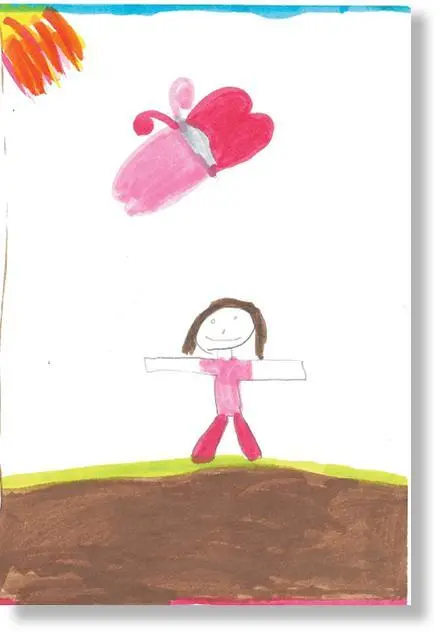
Figure 1-7:Two-dimensional limbs
Human figure drawings also become more sophisticated at this stage. Usually, we begin to see two-dimensional limbs (rather than the lines typical of the previous stage), and some children begin to draw bellies as well, the forerunners of future torso drawings.
In addition, the pre-schematic child begins to acquire the ability of drawing diagonal lines, and later also triangles. The previously rounded roofs now take their typical triangular shape, together with skirts, cypresses, high-heeled shoes, hair ribbons, etc.).

Figure 1-8:Sun-like ray structure
Beside meaningful schematic drawings, this stage also marks the appearance of schematically structured graphic diagrams, such as sun-like ray structures, symmetrical constructions crossed by a line in the middle, balanced square structures and cyclical lines.
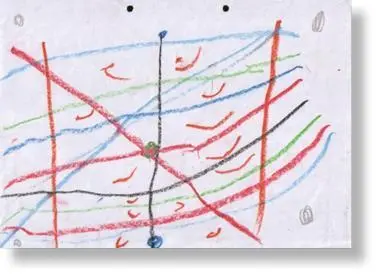
Figure 1-9:Square and cyclical linear structure
The child begins to give meaning and names to all these diagrams and drawings (graphic drawing naming). He describes the act of drawing as if he is “inside” the drawing. Closed forms are described as closed elements familiar from daily life, such as door or window. Finally, the child uses a minimalistic, single line to describe a daily movement experience, such as the road from home to kindergarten and back.
Psychologically, this stage marks the dawning of the insight that the child is separate from the world, that the self is an autonomous entity. Following this insight, the child begins to depict the world around himself in his drawings. Because of the interest in genitals in this age, many drawings refer to the figures’ intimate organs.
In observing such drawings, one must carefully determine whether they represent age-appropriate concerns or indicate inappropriate exposure to adult content or even abuse.
It is recommended not to rush the child to make well-structured schematic drawings at this stage, but allow him to progress at his own pace. Adult intervention at this stage could make the child feel guilty, as if he has not met the adults’ expectations to make a clear drawing, with an understandable name and identifiable figures.
Together with progress in motor skill and spatial perception, some drawings in those ages will still be disorganized, with human figures and objects floating around without any realistic relationship among them. As far as the pre-schematic child is concerned, the paper is the basis on which the figures are “overlaid”.
Stage 4: Schematic Stage – Ages 5–8
By this stage, the child begins to be aware of the logic behind laws and rules of conduct, develops his own rituals, and judges the world according to his inner feelings. He also begins to treat the world of more realistically (brown earth, blue sky, etc.).
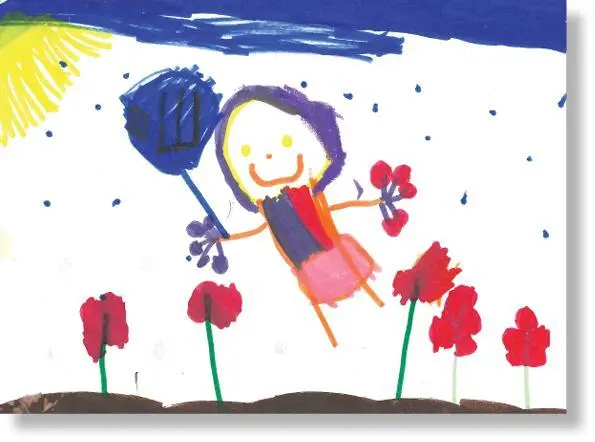
Figure 1-10:Realistic approach to colors
The child already knows the drawing scheme by now. He doesn’t have to observe a tree to be able to draw it. However, through drawing he reprocesses his impressions of reality, so that his documentation skill improves each time. Freud identifies these ages with the onset of the latency period, in which children show greater interest in their peers and other people around them.
Consequently, human figures assume a central role in their artwork. Technically, children are now able to add more organs to the basic human form, as well as articles of clothing. The figure becomes more elongated, and children begin attending to differential proportions within it: elongated legs, belly, outstretched arms, and so on.
Drawings by 5–8 year-olds focus increasingly on the family and begin to show tendencies of accuracy to the point of perfectionism (reflecting the conflict between industry and inferiority).
In the drawings, you can see the objects are rendered complete with their identifying characteristics, as part of the adult conceptual world: a simple square becomes a window; a straight line with circles on top becomes a flower, and so on. Piaget also characterizes perception at these ages as polarized between good and evil, with inflexible and one-dimensional approach to rules. Indeed, in their drawings, children at the schematic stage begin focusing on evil characters (monsters and witches) and good characters (knights and princesses).
Cognitive development enables the schematic children to abstract and separate the wheat from the chaff:
The child will often neglect many details (although he may be fully aware of their existence) and emphasize only those perceived to be critical to functioning: legs that walk, arms that reach out, a mouth that talks or expresses some emotion, and so on.
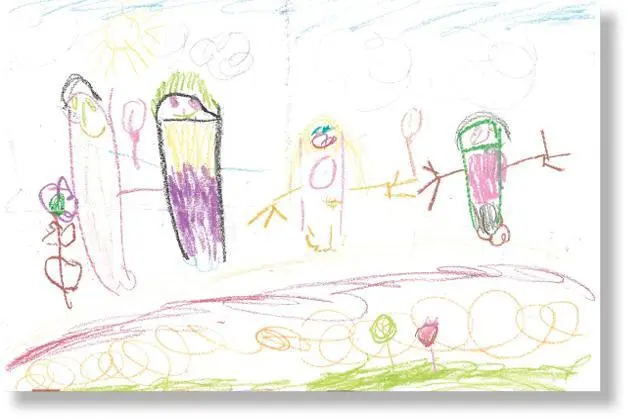
Figure 1-11:Legless human figures
This emphasis can make the drawing seem surreal, as in the following drawing by a 5 years and 2 months-old girl. For this girl, the most important thing is to draw the figures holding balloons or each other’s hands. Therefore, she allowed herself to ignore their legs (which is not typical of her other drawings).
Another example is children who draw a human figure on one side of the page, and the figure’s behind on the other, “because it is behind”.
Drawings at this stage are concise: the children focus on the common denominators of all houses/trees/flowers, rather than on the characteristics which differentiate them. Only after formulating general schemes can these children document the exceptions to the rule.
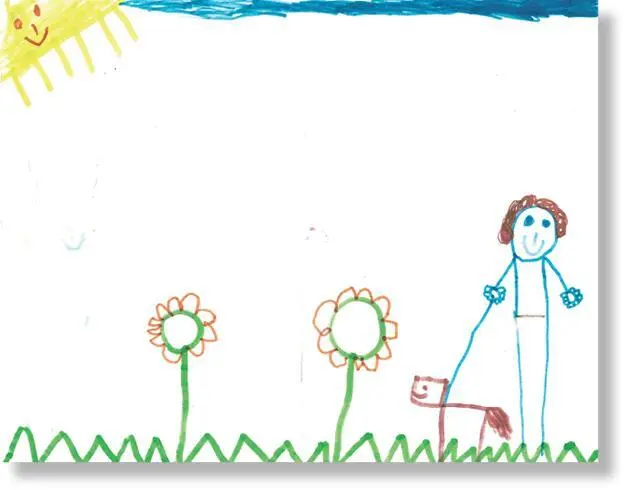
Figure 1-12:Connecting elements in the drawing
Schematic children begin to attach importance to the relations among the various objects in their drawing. In the following drawing by a 5½ year-old, for instance, you can see a child, a dog and a line (leash) connecting them. The schematic children’s spatial perception also improves, and they often begin the drawing by marking the ground and the sky at the lower and upper edges of the page.
Читать дальше



















